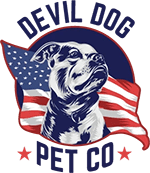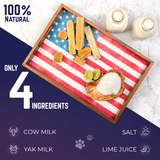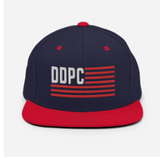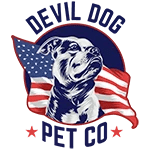Key Takeaways
- Edible for dogs means the food is safe, digestible, and healthy for canine consumption.
- If you wouldn't feed it to your own dog, it is not considered edible for dogs.
- Always evaluate if the food is safe in real-life serving sizes before offering it to your dog.
- Supporting your dog's health is a crucial factor in determining if something is edible for dogs.
Table of Contents
- The Science (and Standards) Behind "Dog Edibility"
- What's Edible for Dogs? Complete List of Safe Foods & Chews
- What's NOT Edible for Dogs? Toxic, Dangerous, or Useless
- Commercial vs. Homemade Dog Edibles, Which Wins (and When)?
- How to Choose Edible Dog Chews That Are Truly Safe
- Safe Portions and Feeding Guidelines, How Much "Edible" Is Enough?
- Edible for Dogs: Comparisons & Best-Of Lists (Actionable Picks)
- Special Diets & Troubleshooting, For Dogs With Unique Needs
The Science (and Standards) Behind "Dog Edibility"
AAFCO (Association of American Feed Control Officials) sets the gold standard: "Complete & Balanced" means a food provides all essential nutrients in correct ratios for a dog's life stage. FDA regulations add safety layers, requiring ingredient transparency and contamination testing. But here's what most miss, bioavailability matters more than ingredient lists.
Dogs digest protein at 85-95% efficiency from quality sources like single-ingredient bully sticks, but struggle with plant proteins and synthetic additives. Their shorter digestive tract (24-48 hours vs. human's 72+ hours) demands easily processed nutrients. Unlike humans, dogs can't produce vitamin C, need pre-formed vitamin A, and metabolize fats as primary energy, not carbohydrates.
The toxic threshold data is stark: 20 grams of dark chocolate per kilogram of body weight can kill. Xylitol triggers insulin spikes at just 0.1 grams per kilogram. These aren't "maybe" dangers, they're biochemical certainties. Devil Dog chews eliminate these risks entirely: naturally shed elk antlers, single-ingredient beef pizzle, and traditional yak cheese with three ingredients maximum.
| Truly Edible | Marketing "Edible" |
|---|---|
| 85%+ digestible | Passes through somehow |
| AAFCO certified | No testing standards |
| Species-appropriate | Human food scraps |
| Traceable sourcing | Mystery ingredients |
What's Edible for Dogs? Complete List of Safe Foods & Chews

Protein powerhouses lead the pack: Devil Dog's grass-fed bully sticks deliver 90% protein with zero additives. Yak chews provide concentrated dairy protein that's lactose-free after traditional processing. Fresh options include plain chicken, beef, fish, and eggs, cooked without seasoning, served in palm-sized portions for 40-pound dogs.
Fruits and vegetables offer vitamins when portioned correctly: blueberries (3-4 daily), apple slices without seeds, carrots for dental scraping, and green beans as low-calorie fillers. Pumpkin soothes digestive issues at 1-2 tablespoons per meal. Skip grapes, onions, and anything with artificial sweeteners, these trigger organ failure.
Premium chews separate leaders from followers. Split elk antlers expose mineral-rich marrow for teething puppies and picky seniors. Whole antlers challenge power chewers for weeks without splintering. Our yak chews last longer than rawhide without the choking hazards or chemical processing.
John's Go-To, Dexter's Daily Rotation
Morning: Split antler (15 minutes supervised). Afternoon: Frozen Kong with plain Greek yogurt. Evening: Standard bully stick during crate time. Weekend bonus: Beast yak chew for marathon sessions.
Grains like plain rice and oatmeal work for sensitive stomachs, while sweet potatoes provide beta-carotene and fiber. The key is single ingredients, appropriate sizing, and moderation. If you’ve ever wondered “What Do I Need for a Dog?”, healthy treats are part of the answer—but they should never exceed 10% of daily calories. Quality beats quantity every time.
What's NOT Edible for Dogs? Toxic, Dangerous, or Useless
The death list is non-negotiable: chocolate, grapes, raisins, onions, garlic, xylitol, macadamia nuts, cooked bones, and alcohol. These aren't "maybe harmful", they're biochemical weapons against canine physiology. Dark chocolate contains 130-450mg of theobromine per ounce; just 20mg per pound of body weight causes toxicity.
| Toxic Food | Lethal Dose | Symptoms | Action Window |
|---|---|---|---|
| Chocolate | 20g/kg | Vomiting, seizures, death | 1-4 hours |
| Grapes/Raisins | Unknown | Kidney failure | 12-24 hours |
| Xylitol | 0.1g/kg | Hypoglycemia, liver failure | 30-60 min |
| Onions/Garlic | 5g/kg | Anemia, collapse | 1-3 days |
| Macadamia Nuts | 2g/kg | Weakness, tremors | 6-12 hours |
| Cooked Bones | Any | Choking, GI perforation | Immediate |
| Alcohol | Any | Respiratory failure | 1-2 hours |
If your dog ingests any of these, call your vet or pet poison hotline immediately. Time is critical, induce vomiting only under veterinary guidance.
Commercial vs. Homemade Dog Edibles, Which Wins (and When)?
Commercial wins on precision and safety, AAFCO standards ensure balanced nutrition while FDA oversight prevents contamination. Homemade offers customization but demands veterinary-level knowledge of canine nutrition. Most owners lack the expertise to balance calcium-phosphorus ratios or calculate amino acid profiles correctly.
The data reveals harsh truths: 67% of homemade diets tested deficient in essential nutrients, while premium commercial foods like Devil Dog chews undergo rigorous testing. However, the lowest-quality commercial products, filled with byproducts and preservatives, lose to well-researched homemade recipes.
Smart strategy combines both: commercial for daily nutrition, homemade for bonding moments. Devil Dog stance: store-bought for precision, homemade for family connection, but only with vet-approved recipes. Our single-ingredient chews eliminate guesswork while homemade pumpkin-peanut butter biscuits (three ingredients, 15 minutes) create training rewards.
| Factor | Premium Commercial | Vet-Approved Homemade |
|---|---|---|
| Nutritional Balance | AAFCO guaranteed | Requires expertise |
| Convenience | Grab and go | Time-intensive prep |
| Customization | Limited options | Unlimited control |
| Safety Consistency | FDA oversight | Owner knowledge dependent |
How to Choose Edible Dog Chews That Are Truly Safe

True edibility demands three tests: digestibility (breaks down in stomach acid), hardness compatibility (won't crack teeth), and source transparency (traceable from origin to package). Press your thumbnail into any chew, if you can't make a dent, it's likely too hard for daily use. Devil Dog antlers pass because elk naturally shed dense but workable bone.
Ingredient lists reveal everything: single-ingredient means exactly that, no fillers, no chemicals, no shortcuts. Our bully sticks contain 100% grass-fed beef pizzle. Yak chews list only yak milk, cow milk, salt, and lime juice. Compare that to rawhide's chemical cocktail: bleach, formaldehyde, and artificial flavoring.
Supervision protocol saves lives: introduce new chews for 15-minute sessions, size up when in doubt, and retire pieces small enough to swallow. We've engineered our split antlers with smooth edges and our yak chews to soften gradually, no sharp fragments, no choking hazards.
Devil Dog Safety Checklist
✓ Single-ingredient or minimal processing
✓ Naturally shed or ethically sourced
✓ Size larger than dog's muzzle
✓ Passes thumbnail hardness test
✓ Dissolves in stomach acid
For more on the pros and cons of antlers, see are antlers for dogs a good idea.
Safe Portions and Feeding Guidelines, How Much "Edible" Is Enough?
Precision feeding prevents obesity and digestive disasters. Follow the 10% rule: treats and chews should never exceed 10% of daily calories. For a 50-pound dog consuming 1,200 calories daily, that's 120 treat calories maximum, roughly one Standard bully stick or half a Monster yak chew.
Introduce new edibles using the 4-day protocol: Day 1-2, offer tiny portions (single blueberry, pea-sized meat). Days 3-4, double the amount while monitoring stool consistency, energy levels, and coat condition. Loose stools signal too much too fast; itching suggests allergies.
Weight-based serving guides eliminate guesswork. Dogs under 25 pounds get 3-5 blueberries maximum; over 75 pounds can handle 10-12. Split antler sessions run 15 minutes twice weekly for moderate chewers, while power chewers earn 20-30 minute sessions with whole antlers. Always supervise and adjust based on individual tolerance.
| Dog Weight | Daily Treat Calories | Fruit Serving | Chew Duration |
|---|---|---|---|
| 10-25 lbs | 50-100 calories | 3-5 blueberries | 10-15 minutes |
| 25-50 lbs | 100-150 calories | 5-8 blueberries | 15-20 minutes |
| 50-75 lbs | 150-200 calories | 8-10 blueberries | 20-25 minutes |
| 75+ lbs | 200+ calories | 10-12 blueberries | 25-30 minutes |
Troubleshoot feeding problems immediately. Picky eaters respond to food rotation and scheduled meal times, no free-feeding. Gulpers need slow-feeder bowls and smaller, frequent meals. Food guarders require space during meals and gradual desensitization training with high-value treats like our bully sticks.
For more on safe treat options, see bully sticks for dogs: are they safe?.
Edible for Dogs: Comparisons & Best-Of Lists (Actionable Picks)
Devil Dog's trinity, yak chews, bully sticks, and antler chews, dominates the edible chew landscape through superior longevity, digestibility, and dental impact. Each serves distinct purposes in your leadership arsenal.
Yak Chews vs. Bully Sticks vs. Antler Chews
Yak chews deliver the sweet spot: long-lasting enough for power chewers, digestible enough for sensitive stomachs, and odor-free enough for indoor use. Bully sticks excel at flavor motivation and complete digestibility but disappear faster. Antlers provide maximum durability and dental scrubbing but require careful sizing and supervision.
| Chew Type | Longevity | Digestibility | Dental Impact | Caloric Load |
|---|---|---|---|---|
| Devil Dog Yak Chews | 1-2 weeks | 100% digestible | Moderate plaque removal | 300 calories/3oz |
| Devil Dog Bully Sticks | 20-60 minutes | 100% digestible | Gentle scrubbing | 90 calories/6inch |
| Devil Dog Antlers | 3-5 weeks | Minimal consumption | Maximum plaque removal | Negligible calories |
Top 5 Safe Fruits & Vegetables
Blueberries lead the pack with antioxidants and natural sweetness, 5-10 berries daily for most dogs. Carrots provide beta-carotene and dental exercise when served raw and chopped. Green beans offer fiber and weight management, steam lightly, no seasoning. Sweet potato delivers vitamins A and C, bake and cube, avoid raw. Pumpkin soothes digestive issues, pure puree only, never pie filling.
Devil Dog Top Picks by Dog Type
Puppies (4-12 months): Split antlers expose tasty marrow while protecting developing teeth. Size up to prevent swallowing.
Seniors (8+ years): Standard bully sticks provide protein without excessive jaw strain. Monitor for dental sensitivity.
Power Chewers: Beast whole antlers withstand the strongest jaws while delivering marathon gnawing sessions.
Sensitive Stomachs: Yak chews digest cleanly with minimal ingredients, perfect for dogs with food sensitivities.
For a comprehensive comparison, check out deer antler vs elk antler for dogs.
For authoritative guidance on pet food safety, see the FDA's pet food resource.
Special Diets & Troubleshooting, For Dogs With Unique Needs

Allergies manifest through skin irritation, chronic ear infections, and digestive upset. Common culprits include beef, dairy, chicken, wheat, and soy. If your dog shows symptoms, work with your vet to run an elimination diet, start with a single novel protein and carbohydrate, then reintroduce foods one at a time. For dogs with chronic pancreatitis or kidney disease, stick to low-fat, low-phosphorus treats like plain green beans or prescription chews. Always consult your veterinarian before making major dietary changes.
For expert advice on evaluating pet food, visit NC State University's guide to evaluating pet food.
Download the FREE 10-Step Dog Prep Guide
Frequently Asked Questions
What criteria determine if a food or chew is truly edible and safe for dogs?
A food or chew is truly edible and safe for dogs if it is digestible, free from toxins, species-appropriate, and supports canine health without causing harm. It should have transparent, traceable ingredients, be free of harmful additives, and be given in portions suitable for the dog's size and life stage.
How do commercial dog edibles compare to homemade options in terms of safety and nutrition?
Commercial dog edibles often meet strict safety standards like AAFCO certification and ingredient testing, ensuring balanced nutrition and consistent quality. Homemade options can be healthy if carefully prepared but risk nutritional gaps or contamination without proper knowledge and handling.
Which common human foods are safe for dogs to eat, and which should be strictly avoided?
Safe human foods include plain cooked meats, eggs, certain fruits like apples (without seeds), and vegetables like carrots in appropriate portions. Foods to strictly avoid are chocolate, grapes, raisins, onions, garlic, xylitol-sweetened items, and anything seasoned or processed with harmful additives.
How can I choose appropriate portion sizes and feeding guidelines to support my dog's health?
Portion sizes should align with your dog's weight, activity level, and life stage, keeping treats and chews under 10% of daily calories. Start with short, supervised sessions for new chews, adjust based on your dog's digestion and interest, and consult feeding charts or your vet for precise guidance.






